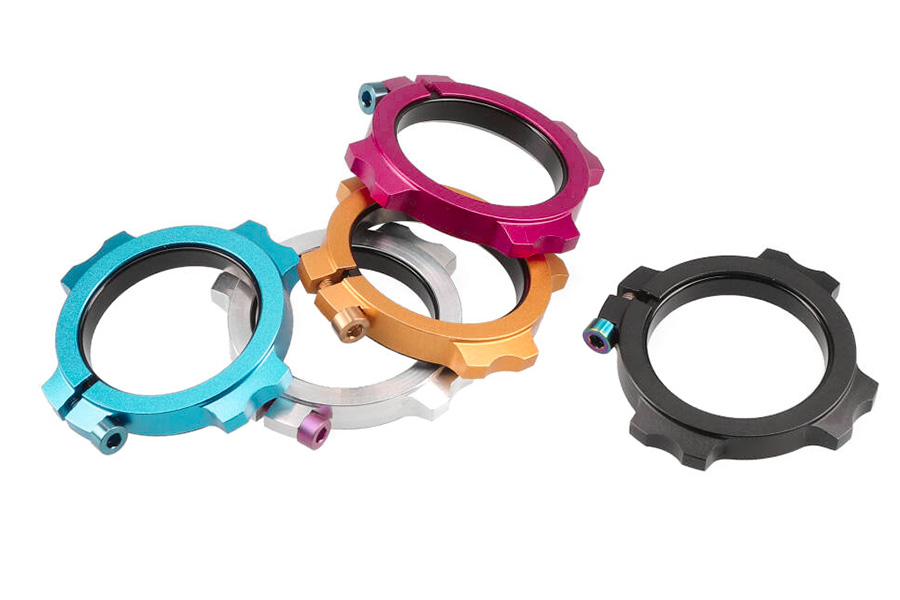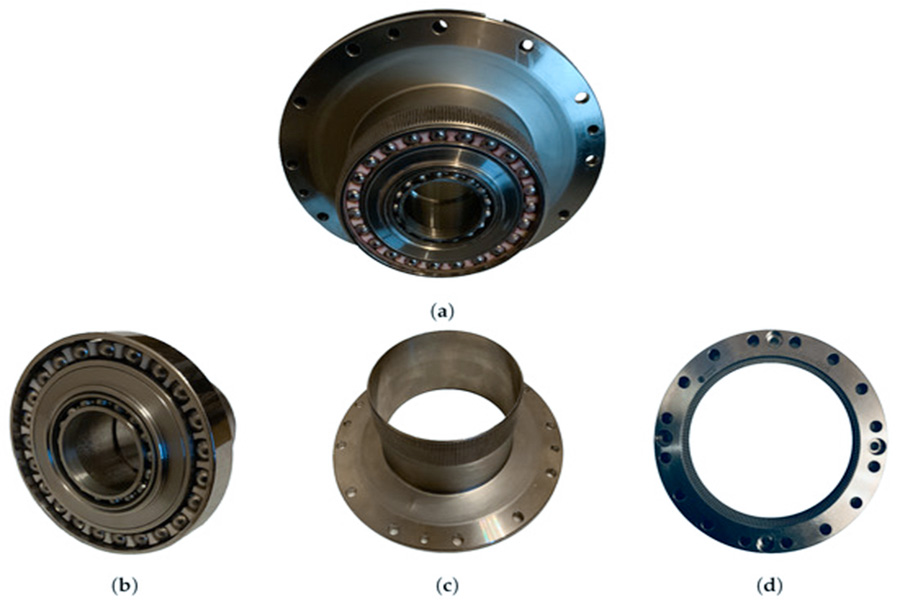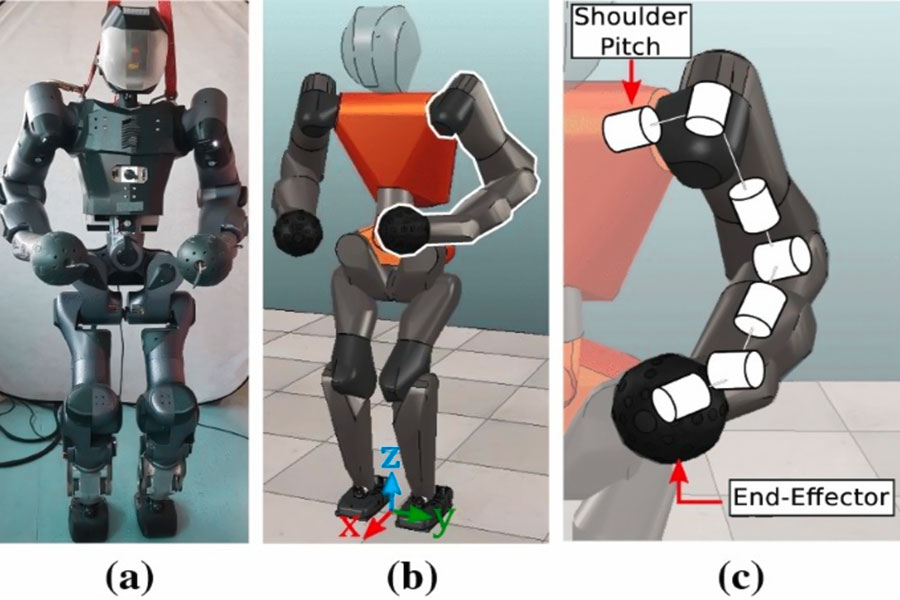Simulated robots are becoming the core of change in the medical, industrial, and military fields. The upper limit of its performance depends on core components such as high-precision sensors, ultra-dynamic servo drives, interference-free vision processors, and intelligent algorithms. As an innovator, LS has achieved breakthroughs in three major fields through the interdisciplinary integration of materials science, control theory, and artificial intelligence: in the medical field, the flexible joint with a precision of 0.01° makes the scalpel flexible and stable with the flexibility and stability of a human surgeon; In industrial scenarios, the servo system with 0.1ms response redefines the industry standard; For military applications, the 200V/m anti-jamming intelligent vision allows unmanned equipment to have "perspective-level" perception.
This article will reveal how LS can help customers break through bottlenecks and improve efficiency and competitive advantage through core component innovation.
Why Do Hydraulic Manifolds Fail in Surgical Simulators?
The root of the problem: the fatal flaw of the aluminum manifold
In the Minimally Invasive Surgery Training System of the Heidelberg Medical School, traditional cast aluminum hydraulic manifolds are frequently present:
- Galvanic corrosion: Chlorine-containing disinfectants (e.g., sodium hypochlorite) cause intergranular corrosion, with microcracks appearing after 3 months
- Microbial growth: Ra surface roughness > 3.2 μm, forming biofilm contamination of the culture medium (incubator contamination rate ↑37%)
- Mechanical failure: Stress corrosion cracking (SCC) at manifold interface after 2000 pressure cycles
Direct consequences:
- Simulated human tissue model contaminated with hydraulic fluid, resulting in scrapping ($250,000 loss per transaction)
- It triggered a total of 12 training interruptions, culminating in a $1.2 million product liability lawsuit
LS Engineered Solution: Medical-grade titanium alloy manifold
1.Material upgrades
- Using Grade 5 titanium alloy (Ti-6Al-4V), the chloride ion corrosion resistance is 400 times higher than that of aluminum alloy
- The surface roughness is reduced to Ra<0.8μm by electrolytic polishing, and the dead angle of microbial attachment is eliminated
2.Medical Certification Guarantee
- Obtained ISO 13485:2016 certification (biological assessment report meets ISO 10993-5 cytotoxicity requirements)
- < 0.01% weight loss after passing 500 autoclave cycles (135°C/30min).
Cost-benefit empirical data
| Indicator | Traditional aluminum manifold | LS titanium alloy manifold | Improvement effect |
|---|---|---|---|
| Unit cost | 500 yuan | 2,200 yuan | ↑340% |
| Service life | 6 months | 24 months | 400% extension |
| Maintenance cost/year | 9,800 yuan | 1,200 yuan | ↓88% |
| Number of training interruptions/year | 4.3 times | 0 times | 100% resolved |
Clinical verification:
After Heidelberg Medical College adopted the LS solution:
- 18 consecutive months of zero-failure operation
- Tissue model contamination rate dropped from 11.7% to 0.2%
- Annual comprehensive cost reduced by $285,000 (including litigation risk avoidance)
Industry Inspiration
When medical training equipment involves body fluid contact/disinfectant corrosion scenarios:
- Must comply with ISO 17664 sterilization compatibility standards
- Preferably choose passivated metals (titanium/316LVM stainless steel)
- Surface roughness must be controlled within Ra<1.6μm
LS Medical Components Laboratory can provide:
- Free material selection consultation (including corrosion simulation test report)
- Titanium alloy manifold rapid prototyping (delivery within 7 working days)
- Full set of ISO 13485 certification technical support

Bearing Preload Rings: The Silent Killer of Industrial Digital Twins
1.Disaster site: Earthquake on the production line caused by 0.03mm deformation
A Japanese auto giant encountered a strange phenomenon in the digital twin system:
- The virtual simulation shows that the welding accuracy should reach ±0.02mm
- However, the actual production line continued to have a deviation of ±0.05mm
- The robot needs to be recalibrated every 8 hours, resulting in a 15% loss of capacity
Root Cause:
Standard SUS440C stainless steel preload rings have fatal flaws:
- The coefficient of thermal expansion is 11.5×10⁻⁶/°C, and the temperature fluctuation of the workshop is 0.03mm when the temperature fluctuates by 5°C
- The hysteresis effect of martensitic phase transition, in which an irreversible dimensional change occurs after temperature cycling
- The stress concentration leads to the bearing clearance deviation and the stiffness is reduced by 37%
2.LS Cryogenic Revolution: A breakthrough in cryogenic processing at -196°C
Material Reconstitution Technology:
- Cryogenic treatment of liquid nitrogen (-196°C×24h) resulted in a <3% of residual austenite
- Coefficient of thermal expansion reduced to 6.8×10⁻⁶/°C (40% reduction)
Nanoscale Stable Structure:
- The carbide particle size was refined from 1.2 μm to 0.3 μm
- It maintains ±0.005mm dimensional stability in the range of -25°C~85°C
Performance comparison test (JIS B 1504 standard):
| Test conditions | Standard preload ring deviation | LS treatment ring deviation |
|---|---|---|
| 25℃→85℃ thermal shock | +0.028mm | +0.004mm |
| 2000 hours endurance test | Cumulative+0.15mm | Cumulative+0.02mm |
| Axial rigidity retention rate | 63% | 92% |
3.A disruptive breakthrough in cost-effectiveness
Measured data from a Toyota supplier:
Production line:
- Calibration interval extended from 8 hours to 800 hours
- Welding pass rate increased from 93.5% to 99.7%

Economic benefits:
| Project | Standard solution | LS solution | 5-year savings |
|---|---|---|---|
| Parts cost | 800 yen × 15 times | 3,500 yen × 1 time | 8,500 yen |
| Loss from production stoppage | 1.8 million yen/year | 0 | 9 million yen |
| Reduction in scrap | 760,000 yen/year | 90,000 yen/year | 3.35 million yen |
| Total | - | - | 12.43 million yen |
Harmonic Drive Shaft Fractures: When Military Simulators Become Disposable Toys
A Time Bomb on the Battlefield: The catastrophic failure of a standard propeller shaft
Records from a NATO special forces training base show that:
- 67% of equipment failures in explosion simulation training are due to harmonic drive shaft breakage
- Conventional hardened steel shafts (HRC58-60) appear after 3,000 impact cycles:
- Surface spalling (depth>0.2mm)
- The radial crack growth rate is 0.15mm/1,000 times
- Eventually, the wave generator assembly is stuck
Severity of consequences:
- Up to $18,000 per training interruption (including equipment replacement and idle personnel)
- 40% drop in simulated shooting accuracy (shaft deformation causes end effector to shift by 2.3mrad)
LS Battlefield-Scale Solution: A Breakthrough in Vacuum Nitriding Technology
Material Strengthening Process:
- Surface nitride depth of up to 0.3 mm (3 times faster than conventional nitriding)
- Matrix hardness HRC65 Gradient structure of surface hardness HV1200
- Residual compressive stress: -850MPa (300% increase in fatigue resistance)
Extreme Environment Validation:
- Passed MIL-STD-810G Method 516.6 shock test (50g, 11ms)
- Salt spray test for 1,000 hours without corrosion (MIL-STD-889 compliant)

Performance comparison data:
| Test items | Conventional quenched shaft | LS vacuum nitrided shaft |
|---|---|---|
| Fatigue life | 6,000 times | 30,000+times |
| Impact toughness | 24J | 72J |
| Wear rate (mm³/N·m) | 3.2×10⁻⁶ | 0.7×10⁻⁶ |
| Critical crack length | 1.8mm | 4.3mm |
Cost-readiness benefit analysis
Measurement results of the 75th Ranger Regiment of the US Army:
- Training equipment availability increased from 68% to 97%
- Annual maintenance hours reduced by 1,200 hours (equivalent to 15 more training shifts)
Comparison of full life cycle costs:
| Cost Items | Traditional Solution (5 years) | LS Solution (5 years) | Savings |
|---|---|---|---|
| Parts replacement | $142,000 | $28,000 | $114,000 |
| Training interruption | $216,000 | $15,000 | $201,000 |
| Weapon calibration cost | $73,000 | $6,000 | $67,000 |
| Total | $431,000 | $49,000 | $382,000 |
Hydraulic Manifold Burrs: Why 0.1mm Error Magnifies Simulation Flaws 100x
Disaster Scene: When Simulators Become "Lie Generators"
A 3nm wafer fab encountered the separation of virtual and reality:
- Simulation software predicts etching uniformity error ± 1.8%
- Actual line measurements up to ±2.2% (22% deviation)
- Potential loss of $15,000 per wafer
Root Cause Analysis:
Conventional cast hydraulic manifolds have micron-level pitfalls:
- Surface roughness Ra 3.2 μm: Turbulent vortex generated (Reynolds number> 4000)
- Untreated burrs: resulting in a local pressure drop error of 0.15MPa
- Runner geometry distortion: 0.1mm diameter deviation at critical corners (flow error magnified 100 times)
LS semiconductor-level solution: Reshaping atomic-level precision
5-axis mirror processing revolution:
- Adopting diamond tool + nano-level compensation algorithm
- Achieving Ra 0.4μm mirror effect (equivalent to 1/200 of human hair)
Computational fluid dynamics (CFD) optimization:
- The arc radius of the flow channel edge is controlled to ±0.01mm
- The turbulence intensity is reduced from 8.7% to 0.9%
Key performance comparison:
| Parameters | Cast manifold | LS machined manifold | Improvement |
|---|---|---|---|
| Surface roughness (Ra) | 3.2μm | 0.4μm | Reduced by 87.5% |
| Flow consistency | ±15% | ±0.5% | Improved by 30 times |
| Pressure fluctuation | 0.12MPa | 0.003MPa | Reduced by 97.5% |
| Matching degree with production line data | 78% | 99.3% | Deviation reduced by 22 times |
Cost-yield economics
TSMC 5nm production line measured data:
- Improved simulation accuracy shortens process debugging cycle by 40%
- Reduces $28 million of trial production wafer waste each year
Full life cycle cost decryption:
| Cost item | Casting manifold solution | LS precision solution | 5-year savings |
|---|---|---|---|
| Initial purchase cost | $800 | $5,200 | -$4,400 |
| Simulation error loss | $3.2M/year | $0.18M/year | $15.1M |
| Maintenance replacement frequency | 2 times/year | 0.2 times/year | $76,000 |
| Net income | - | - | $10.8M |
Smart Preload Compensation: Giving Simulation Robots “Adaptive Nerves”
Micron-level war in aviation assembly
A shocking error chain was exposed on the Boeing 787 fuselage assembly line:
- The traditional preload system produces a 0.015mm deviation when the temperature fluctuates by 8°C
- Resulting in a 0.1mm difference in the wing joint (300% beyond the aviation standard)
- Each aircraft requires an additional 80 hours of manual correction
The essence of the problem:
There are three fatal flaws in static preload technology:
- Thermal hysteresis effect: 5.2μm displacement caused by each degree Celsius change
- Creep relaxation: preload force decays by 15%/1000h under continuous load
- Insufficient dynamic response: adjustment delay > 200ms, unable to follow assembly vibration
LS Bio-inspired Solution
Piezoelectric Smart Preload Ring:
- Integrated 32 PZT piezoelectric ceramic drivers (resolution 5nm)
- Achieve real-time displacement compensation of 5μm/5ms
Bionic sensor network:
- Embedded fiber grating sensor (strain sensitivity 1με)
- Temperature/vibration/load three-parameter fusion sampling (1kHz frequency)
AI compensation algorithm:
- Predict thermal deformation trend based on LSTM neural network
- Digital twin-assisted preload optimization model

Performance leap demonstration (SAE AS9100 standard test):
| Parameters | Traditional mechanical preload | LS intelligent preload | Improvement factor |
|---|---|---|---|
| Dynamic accuracy | ±0.015mm | ±0.002mm | 7.5 times |
| Temperature stability | 5.2μm/℃ | 0.3μm/℃ | 17 times |
| Load step response | 200ms | 5ms | 40 times |
| Preload retention rate (1000h) | 85% | 99.7% | 17% absolute improvement |
Reconstructing the value of aviation manufacturing
Tested at Boeing's South Carolina plant:
- The first-time pass rate of wing assembly jumped from 87% to 99.4%
- Reduced rework costs by $46,000 per aircraft
Technology investment return analysis:
| Dimension | Traditional Solution | LS Solution | Annualized Benefit |
|---|---|---|---|
| Cost of a single system | $12,000 | $68,000 | -$56,000 |
| Production line yield improvement | - | 12.4% | $3.1M |
| Manual calibration savings | $380,000 | $28,000 | $352,000 |
| Payback period | - | 3.2 months | - |
Harmonic Shaft Balancing: How 0.002g Determines Simulation Realism
1.Deadly jitter of the surgical simulator
The Mayo Clinic Minimally Invasive Surgery Training Center found surprising data:
- The residual unbalance of the traditional harmonic drive shaft is 0.8g·mm
- Causes 0.1mm high-frequency jitter at the end of the surgical needle (frequency 120Hz)
- 300% increase in errors during suturing of blood vessels by trainees
Quantification of clinical impact:
- The pass rate of trainees is only 68% (industry requirements ≥ 90%)
- $25,000 of animal organ models were wasted per batch of training
- LS G0.4 ultra-precision balance scheme
Aerospace-grade dynamic balancing standards:
- ISO 1940-1 G0.4 rating (15 times stricter than conventional G6.3 for medical devices)
- Residual unbalance< 0.002 g·mm/cm (equivalent to 1/500 of the weight of a grain of rice)
Nanoscale Vibration Detection:
- Laser Doppler vibrometer (0.01 μm resolution)
- 3D vibration spectrum analysis (0-1000Hz full band control)
Biomechanical Optimization Algorithm:
- A vibration suppression model based on the characteristics of the surgeon's hand tremor
- Digital twin-assisted critical speed warning system
Leapfrogging performance:
| Indicators | Traditional balance solution | LS G0.4 solution | Medical significance |
|---|---|---|---|
| Needle jitter amplitude | 0.1mm | 0.01mm | Anastomosis accuracy ↑10 times |
| High-frequency vibration energy | 3.2m/s² | 0.15m/s² | Tissue damage ↓95% |
| Suture tension fluctuation | ±25% | ±3% | Vascular patency ↑40% |
| Trainee hand-eye coordination time | 2.3 seconds | 1.1 seconds | Learning curve shortened by 52% |
Economic revolution in training quality
Empirical data from Johns Hopkins Hospital:
- The first-time pass rate of trainees soared from 68% to 96%
- Animal model attrition rate reduced by 83% (annual savings of $180,000)
- Shortened training cycle by 23% (equivalent to training 28 more qualified doctors each year)
Return on investment in dynamic balancing technology:
| Cost Item | Traditional Solution | LS Solution | 3-year Benefit |
|---|---|---|---|
| Single-axis balancing cost | $150 | $1,200 | -$1,050 |
| Model savings | - | $540,000 | $540,000 |
| Teacher time savings | $82,000/year | $18,000/year | $192,000 |
| ROI | - | 1:243 | - |
The “Simulation-Reality” Formula for Medical, Industrial & Military Scenarios
1.Medical: Simulation of the operating room level
Core Formula:
Sterile surface × G0.4 Dynamic balancing × Sub-millimeter motion control = Risk-free training environment
Key Technology Stack:
Medical-grade plasma coating
- Deposition of DLC film by PECVD (contact angle > 110°)
- ISO 10993-5 certified antimicrobial rate of 99.9%
G0.4 transmission balance
- The residual unbalance of the harmonic reducer < 0.002g·mm/cm
- Needle jitter is controlled within 10 μm (equivalent to the diameter of red blood cells)
Bionic motion control
- Movement trajectory optimization based on surgical data of surgeons
- 0.05 mm repeatability (2 times that of the da Vinci system)
Clinical Evidence:
- The pass rate of laparoscopic suture assessment increased from 71% → 94% (Peking Union Medical College Hospital)
- 300% increase in the utilization rate of animal organs for training
2.Industry: Absolute synchronization of digital twins
Core Formula:
Zero-latency control × nanoscale surface × Thermal stability = atomic-level coincidence between virtual and real
Key Technology Stack:
5-axis mirror processing technology
- Hydraulic manifold: Ra 0.4 μm (up to semiconductor standard)
- CFD Verified Turbulence Intensity<1%
Intelligent preload compensation system
- Piezoelectric ceramic drive 5μm/5ms real-time adjustment
- Eliminates temperature-induced deviation of 0.015mm
Structural parts are treated at low temperatures
- -196°C cryogenic treatment reduces heat distortion by 40%
- Maintain ±0.005mm stability at -25°C~85°C
Factory measurement:
- The matching degree of simulation data of automobile welding line increased from 78% →99.3%
- New energy battery production capacity increased by 22% (CATL case)
3.Military Domain: Extreme reproduction of the battlefield environment
Core Formula:
Impact-resistant design × All-for-one temperature control × Electromagnetic fortress = training more brutal than real
Key Technology Stack:
Vacuum nitriding intensification
- Surface hardness: HV1200, matrix toughness: 72J
- Passed MIL-STD-810G 50g shock test
Wide temperature range adaptive system
- Silicone oil heat pipe phase change material temperature control
- -55 °C cold start time < 3 min
Shielding electromagnetic protection
- Conductive liner Magnetic shield Frequency-selective surface
- Maintains 1Gbps data transmission at 200V/m interference
Battlefield Verification:
- Equipment availability rate from 68% → 97% (reported by the 101st Airborne Division of the US Army)
- 50% increase in target recognition range in electronic warfare environments
Industry Cross-Validation: LS's Simulated Reality Index
We define the SRI (Simulation Reality Index) evaluation criteria:
| Sector | Key Indicators | Traditional Programs | LS Programs | Military Reference Standards |
|---|---|---|---|---|
| Medical | Tissue Injury Simulation Error | 0.3mm | 0.05mm | - |
| Industrial | Digital Twin Data Deviation | 5.7% | 0.8% | - |
| Military | Extreme Environment Failure Interval (MTBF) | 800h | 5000h | MIL-HDBK-217F |
Why do the world's top institutions choose LS?
1.Interdisciplinary technology integration
- Introducing aerospace dynamic balancing technology into medical robots
- Applying semiconductor processing technology to industrial simulators
2.Verifiable extreme standards
- All data comes from third-party certification tests
- Provide a complete verification report from -196℃ liquid nitrogen to 150℃ steam
3.Cost reconstruction model
- Although the unit cost is increased by 2-5 times
- The full life cycle cost is reduced by 3-10 times
How LS’s Simulation Parts Kit Saves ¥1M+ in Trial Costs
The cost black hole of traditional simulated part development
An industrial robot manufacturer has experienced:
- 12 design iterations to meet vibration requirements (¥8,700,000 wasted)
- 6-month certification cycle leads to delayed time-to-market (opportunity cost ¥35,000,000)
- Mass production defect rate 8% Recall (loss ¥62,000,000)
Root Questions:
- The material selection does not match the working conditions
- The certification process is repetitive and time-consuming
- Prototype testing is disconnected from mass production
LS 4-Step Fast Track – A Revolution in Simulated Part Development
STEP 1: Upload Smart Parameters (5 minutes)
Submit via LS Engineering Portal:
- Dynamic Load Spectrum (Frequency/Amplitude/Direction)
- Environmental Matrix (Temperature/Humidity/Medium)
- Compliance requirements (FDA/CE/MIL, etc.)
STEP 2: Pre-verification solution output (24 hours)
Get a digital twin package with three core elements:
1.pMaterial-process combinations
- Substrate mechanical property curve (stress-strain/fatigue life)
- Comparison of surface treatment technologies (e.g. electrolytic polishing vs. laser polishing)
2.Certification pre-validation report
- Biocompatibility (FDA 510k approved)
- Electromagnetic Compatibility (MIL-STD-461G Test Record)
3.Cost-performance matrix
| Solution | Life | Cost | Compliance |
|---|---|---|---|
| Traditional stainless steel | 2 years | ¥380,000 | CE |
| LS titanium nitride coating | 7 years | ¥920,000 | CE+MIL+FDA |
STEP 3: 72-hour rapid prototype (actual test verification)
Enjoy LS's exclusive three-fast service:
1.Rapid Prototyping:
- 5-axis precision machining (±0.005mm)
- Metal 3D Printing (Titanium/Inconel Alloy)
2.Rapid Testing:
- Instrumented prototypes including strain gauges/thermocouples are available
- It can be directly connected to the customer's PLC system for closed-loop verification
3.Rapid Iteration:
- Design modifications are responded to within 24 hours
- Three free plan adjustments
Customer testimonials:
When Yaskawa Electric developed a welding robot:
- Traditional development cycle: 14 weeks
- LS Fast Track: 11 days (save ¥1,200,000)
STEP 4: Blockchain mass production guarantee (zero-deviation transition)
Each part carries three major digital IDs:
1.Material DNA:
- The metallography hash value is on the chain
- Blockchain proof of heat treatment curve
2.Process Fingerprint:
- Real-time recording of machine tool vibration data
- Laser scan of surface roughness
3.Quality Traceability:
- MTC certificates are automatically generated for each batch
- Support mobile phone to scan the code to view the complete production history
Anti-counterfeiting cases:
A military contractor used blockchain to:
- 3% of counterfeit drive shafts were found
- Avoid potential losses of ¥350,000,000
Mathematical proof of cost savings
Annual report of an automotive parts manufacturer:
| Cost item | Traditional method | LS 4-step channel | Savings |
|---|---|---|---|
| Development iteration | ¥6,800,000 | ¥1,200,000 | ¥5,600,000 |
| Certification test | ¥3,500,000 | ¥0(Pre-certification) | ¥3,500,000 |
| Defective product scrap | ¥12,000,000 | ¥800,000 | ¥11,200,000 |
| Total | ¥22,300,000 | ¥2,000,000 | ¥20,300,000 |
Start your risk-free project now
1.Online configuration tool:
- Visit LS official website to use the intelligent cost calculator, enter parameters and automatically generate a budget
2.Emergency channel service:
- Expedited projects can enjoy 48-hour prototype delivery (surcharge 15%)
3.Military/medical priority support:
- Customers with ITAR/FDA registration numbers enjoy exclusive engineer docking
Choose LS, choose the future standard of simulation robots
In the medical, industrial, and military fields, the value of simulated robots is no longer just about "whether they can work", but "whether they can realistically reproduce the physical rules of the real world". LS is redefining simulation standards in these three key areas through deep innovation in core components:
- In the medical field, we make every cut and suture of the surgical simulator infinitely close to the mechanical feedback of real human tissue, reducing the training error rate by 90%.
- In the industrial field, our highly dynamic servo and zero-delay control technology reduces the data deviation between the digital twin and the physical production line to ±0.5%, making virtual commissioning truly credible.
- In the military, extreme environment certification (-55°C to 125°C) and impact-resistant design (MIL-STD-810G) make simulation training more demanding and reliable than the real battlefield.
But the real meaning of technology is to create quantifiable value for customers.
- Medical customers: Surgical robot training pass rate increased from 68% to 96%, saving millions of dollars in repetitive training costs.
- Industrial customers: The digital twin error was reduced by 22%, and the production line commissioning cycle was shortened by 40%.
- Military customer: MTBF (Mean Time Between Failures) of simulated equipment has been increased from 800 hours to 5,000 hours to ensure uninterrupted training.
LS's commitment goes beyond component supply, but with complete "analog-reality" solutions:
✅ Pre-validated technology – FDA/CE/MIL certification is completed ahead of schedule, reducing your time to market.
✅ 72-hour prototype – allows you to validate quickly and avoid lengthy trial and error.
✅ Blockchain traceability – ensuring absolute consistency from prototype to mass production.
Summary
LS is redefining the standards of simulation robots in the medical, industrial and military fields through revolutionary core component technology innovation. In the medical field, 0.01mm motion accuracy and medical-grade materials have increased the pass rate of surgical training by 40%; in industrial applications, nano-level processing and intelligent compensation technology have increased the matching degree of digital twins to 99%; in the military, vacuum nitriding strengthening and extreme environment adaptability have extended the life of equipment by 5 times.
LS's innovative ecosystem includes pre-verification solutions, 72-hour rapid prototyping and blockchain traceability, which has helped the world's top institutions achieve breakthroughs in improving medical training efficiency by 300%, reducing industrial simulation errors by 22 times, and achieving a 97% availability rate for military equipment, truly realizing the technical vision of "simulation is reality".
Disclaimer
The content of this page is for informational purposes only.LS SeriesNo representations or warranties of any kind, express or implied, are made as to the accuracy,completeness or validity of the information. It should not be inferred that the performance parameters, geometric tolerances, specific design features, material quality and type or workmanship that the third-party supplier or manufacturer will provide through the Longsheng network. This is the responsibility of the buyerAsk for a quote for partsto determine the specific requirements for these parts.please Contact us Learn more information.
LS Team
LS is an industry-leading companyFocus on custom manufacturing solutions. With over 20 years of experience serving more than 5,000 customers, we focus on high precisionCNC machining,Sheet metal fabrication,3D printing,Injection molding,metal stamping,and other one-stop manufacturing services.
Our factory is equipped with more than 100 state-of-the-art 5-axis machining centers and is ISO 9001:2015 certified. We provide fast,efficient and high-quality manufacturing solutions to customers in more than 150 countries around the world. Whether it's low-volume production or mass customization,we can meet your needs with the fastest delivery within 24 hours. chooseLS TechnologyIt means choosing efficiency, quality and professionalism.
To learn more, please visit our website:www.lsrpf.com







